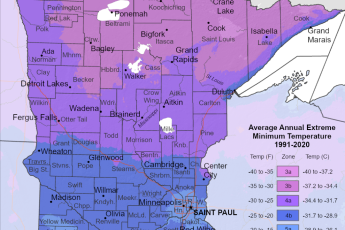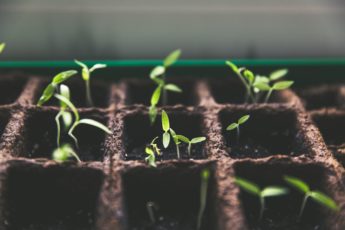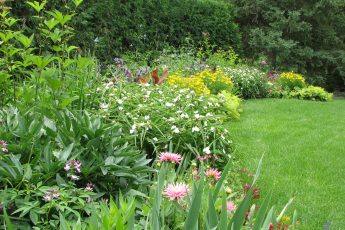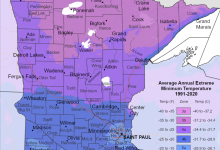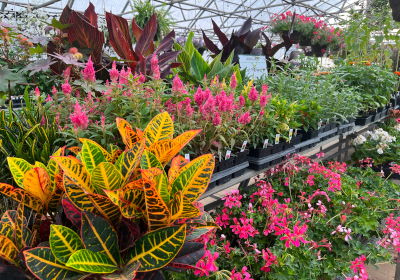
How do you keep your annual plants healthy and vibrant to provide a full season of enjoyment? Fertilizing annuals is key to keep your annual plants happy and healthy.
Why Fertilizing is so Important
An annual plant’s root system differs from a perennial plant. Annual roots are temporary root systems that are shallow when compared to the deep roots of perennials. Because of this shallower root system, annuals require more frequent watering and fertilization. Annuals planted in containers are especially in need of fertilization as they only have a set amount of nutrients available to them. Most potting mixes contain a slow release fertilizer however, over time the plants will deplete the nutrients available in their pot and cannot stretch out to find more food. If your annual plants don’t seem to be growing, lacking color or are just not blooming as they once were, it is time to fertilize.
Types of Fertilizers
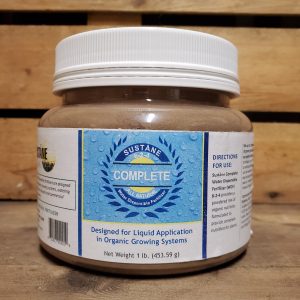
Water Soluble – Water soluble fertilizer is mixed into water to dissolve or disperse. This type of fertilizer is generally the least expensive and a small container will go a long way.
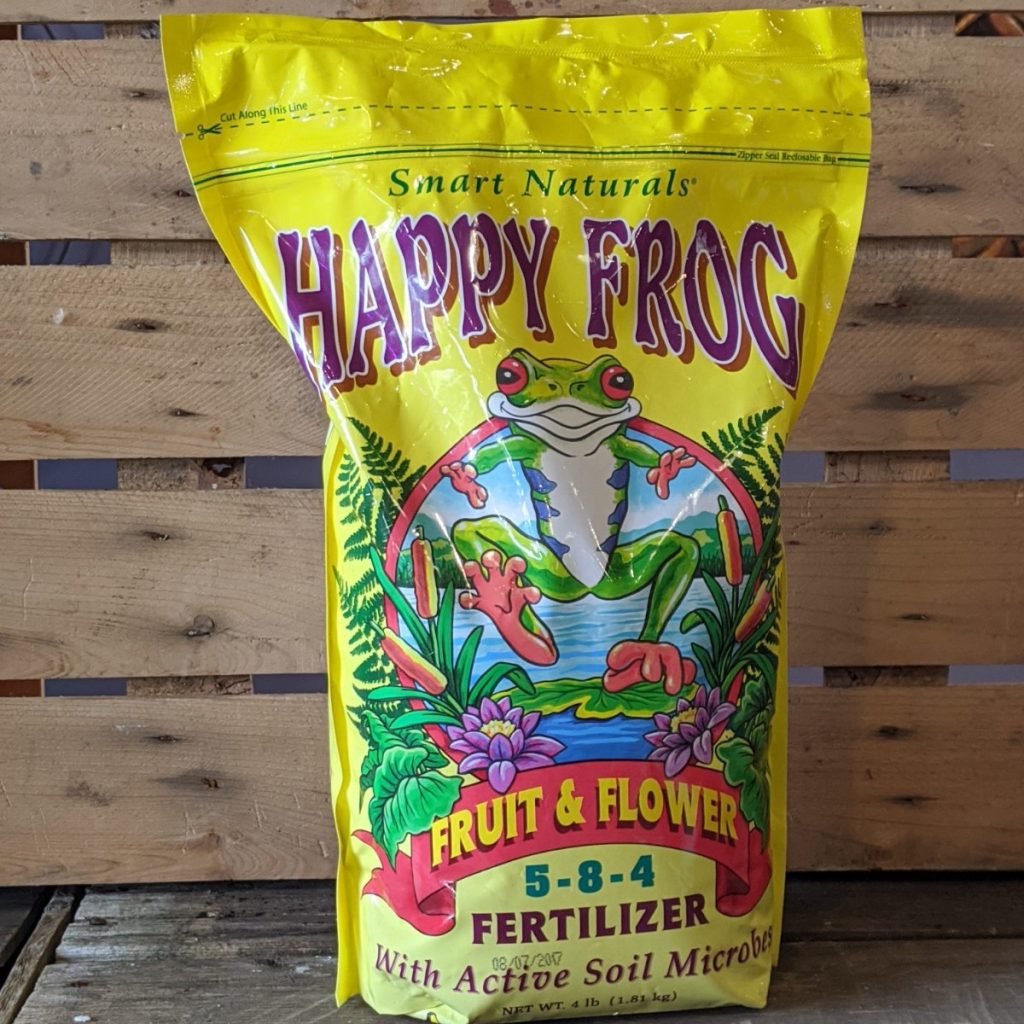
Slow Release – Slow release fertilizer is usually granular and added to the soil at time of planting. A slow release can also be applied post planting to the top of soil and gently worked in. This type of fertilizer releases nutrients slowly over time when watering.
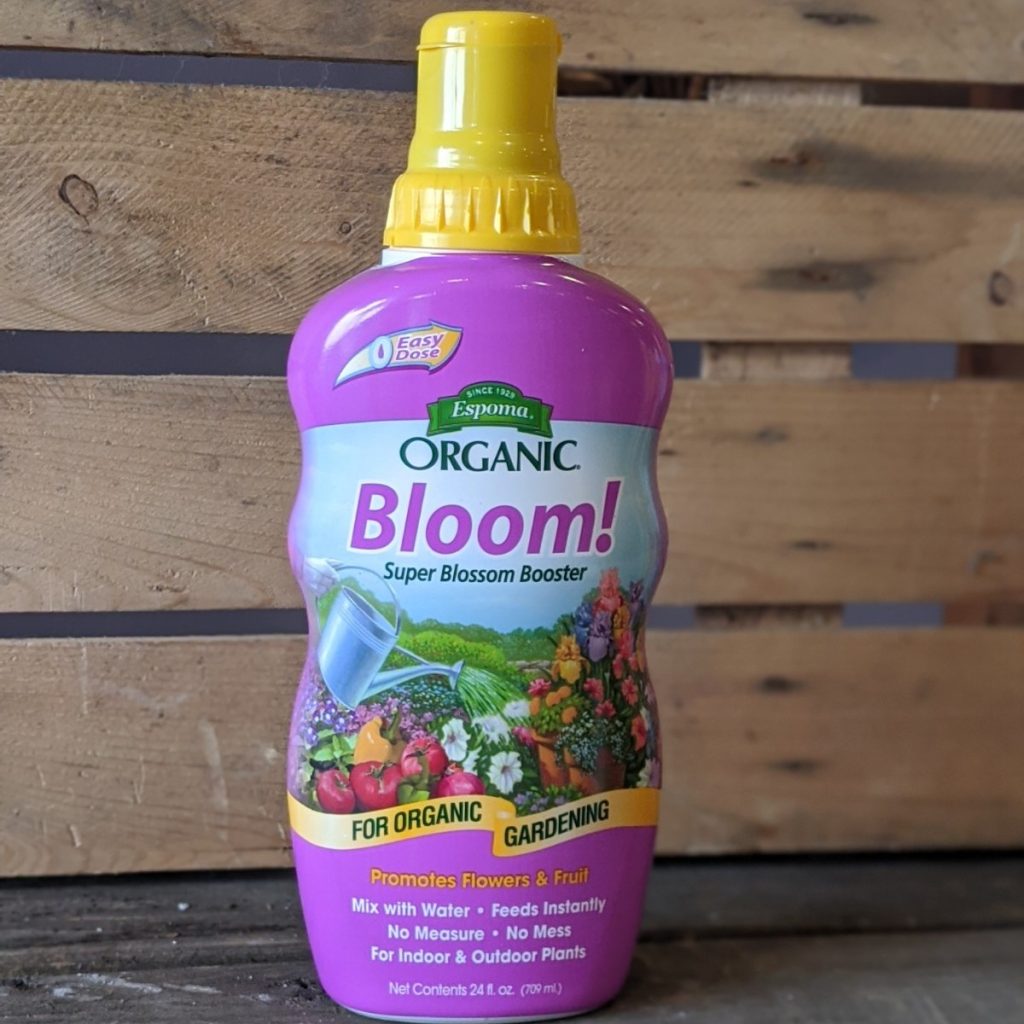
Liquid – Liquid fertilizers are added to water. This type of fertilizer does not need to dissolve allowing for immediate nutrient uptake by plants.
Essential Plant Nutrients
Nitrogen, phosphorus and potassium are the primary macronutrients needed by plants because they use them more than other nutrients. On any container of fertilizer you will see three numbers that represent the ratio of these primary nutrients in the fertilizer formula.
(N) Nitrogen – The most important nutrient to support upward growth. Nitrogen helps your plants photosynthesize (the process of which plants turn sunlight into energy) by aiding in the production of chlorophyll. Yellowing or wilted leaves and stunted growth of your plant are indicators of a possible nitrogen deficiency.
(P) Phosphorus – Essential for the vigor and health of plants. Phosphorus contributes to strengthening root and stem growth along with boosting bloom and fruit production. If your plant is failing to bloom and an increase of sunlight does not boost output, your plant may require more phosphorus.
(K) Potassium – Is vital to the overall health of a plant. Potassium helps plants use water and transport nutrients from the roots to the leaves. Potassium also plays a vital role in supporting photosynthesis. A deficiency in potassium is difficult to diagnose however, general plant decline is a broad indicator.
A simple saying to remember what the numbers represent is, “up (nitrogen/upward growth), down (phosphorus/healthy roots and blooms) and all around (potassium/movement of nutrients)”.
Tips and When to Fertilize
Annuals are heavy feeders because of their root system and how we expect them to perform. In order to achieve a season of blooms, it is best to fertilize your annuals weekly. Visual cues will also let you know when your plants are feeling hungry. Yellow leaves, wilting and an overall reduction in plant vigor are cues to step up your fertilizing routine.
To avoid a plant “overeating”, when using a water soluble or liquid fertilizer always water first, then wait a day to fertilize. Avoid the potential to burn by using an organic fertilizer. Here at Heidi’s GrowHaus we have a variety of organic fertilizers we use on our own gardens and plants and that we strongly recommend to our guests. Read the container label and always apply at the appropriate rate, less is more when it comes to fertilizing.
Visit the University of Minnesota Extension for more information on fertilizing annuals. Have a fertilizer question, we are happy to help! email us at info@bloomonmn.com


